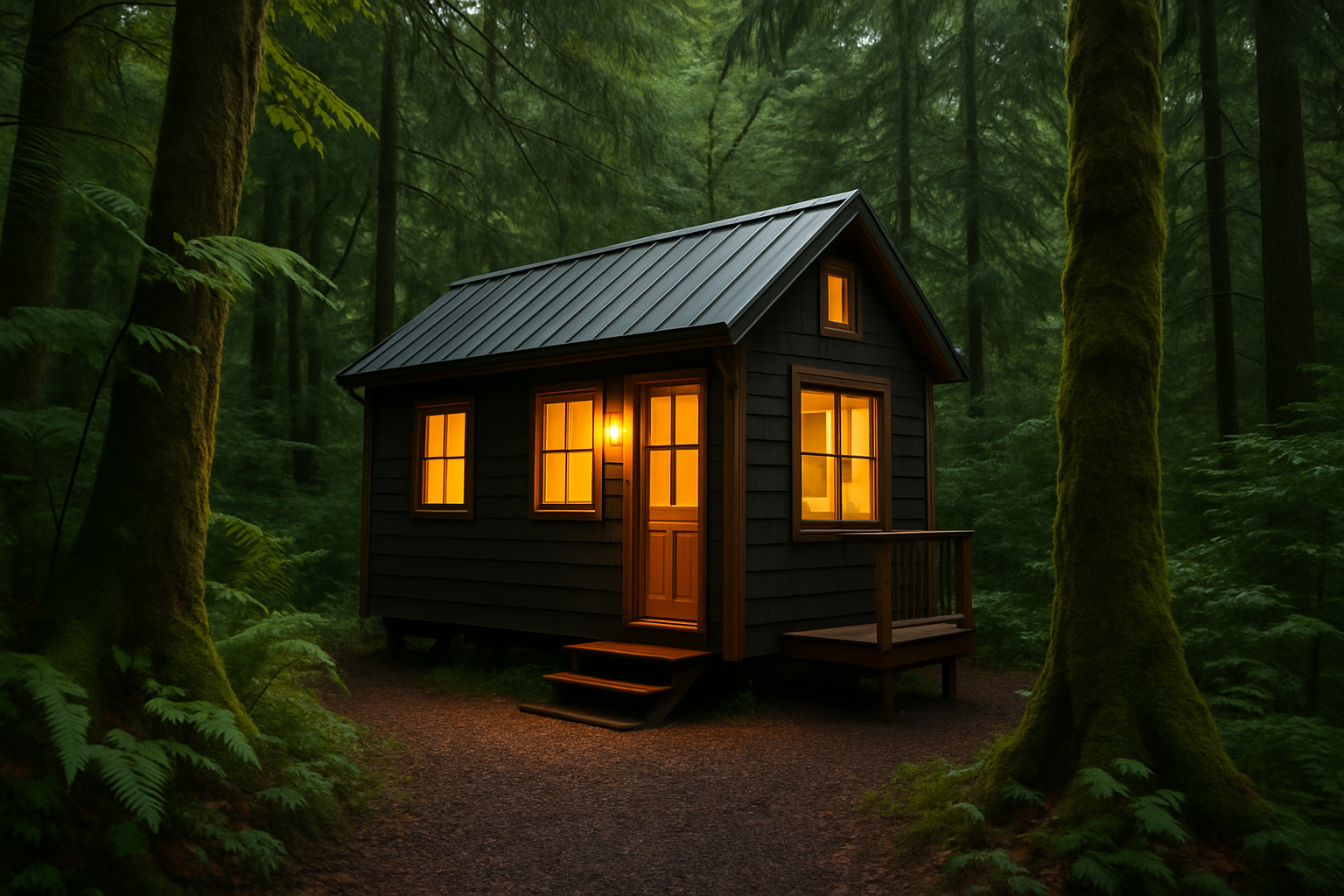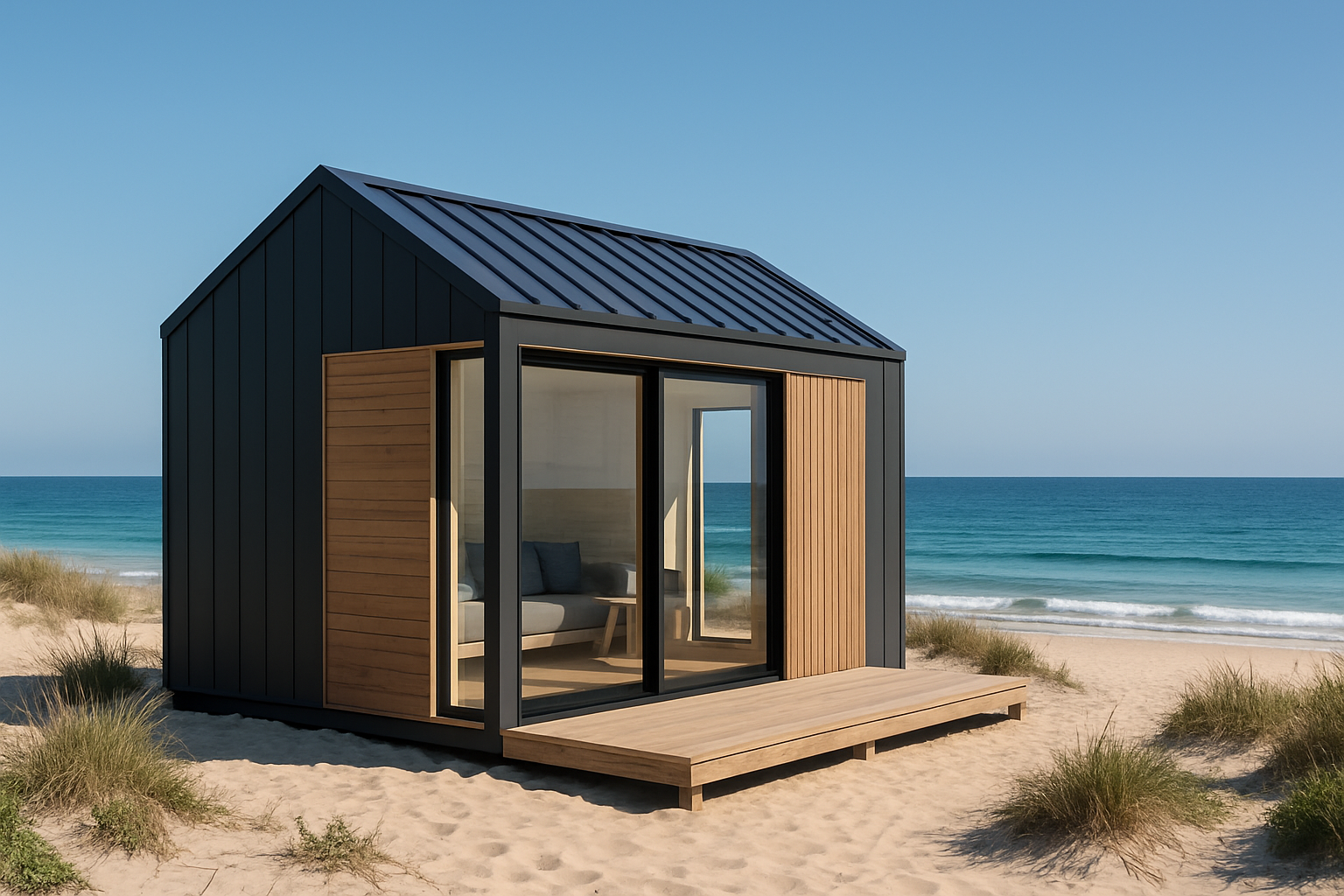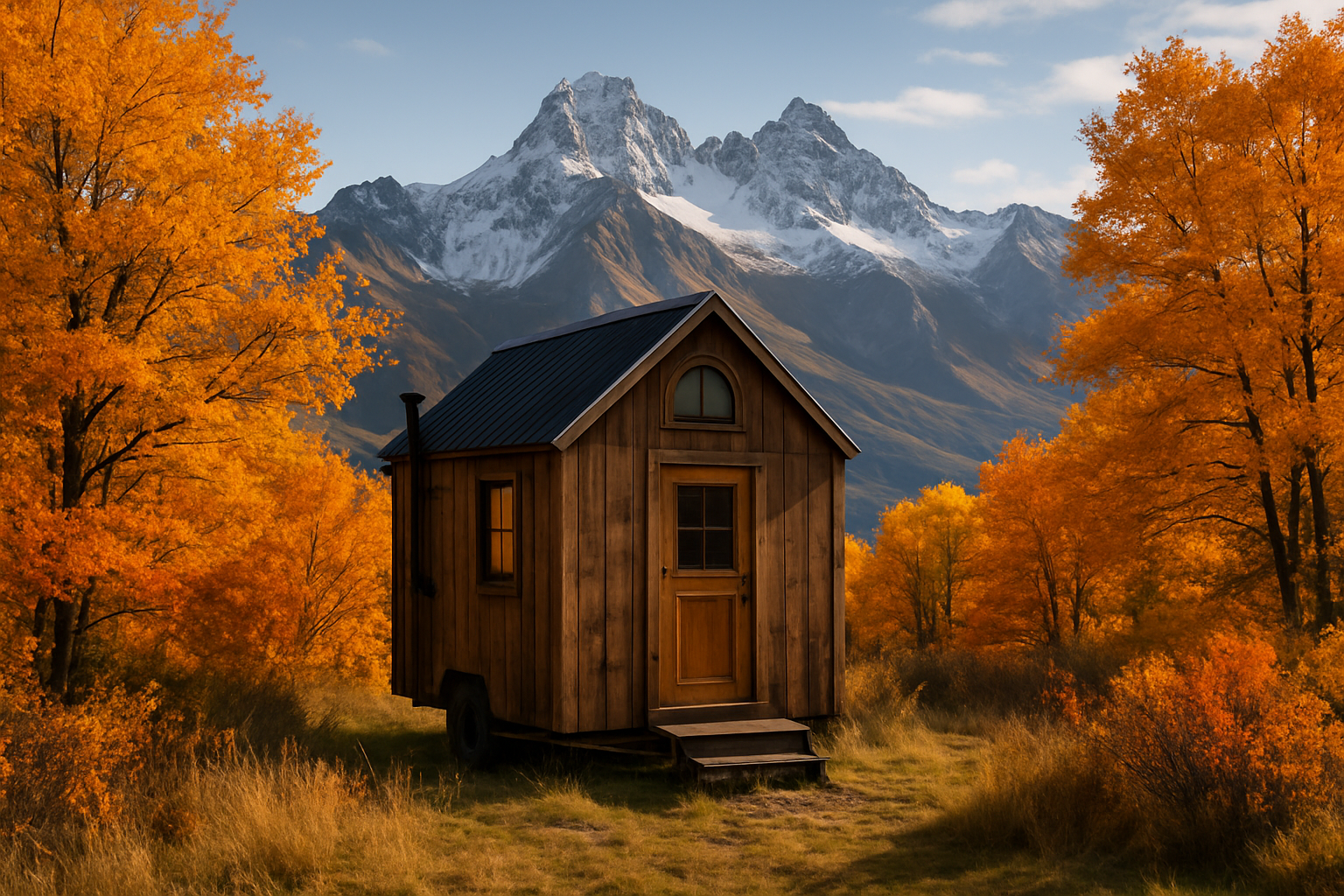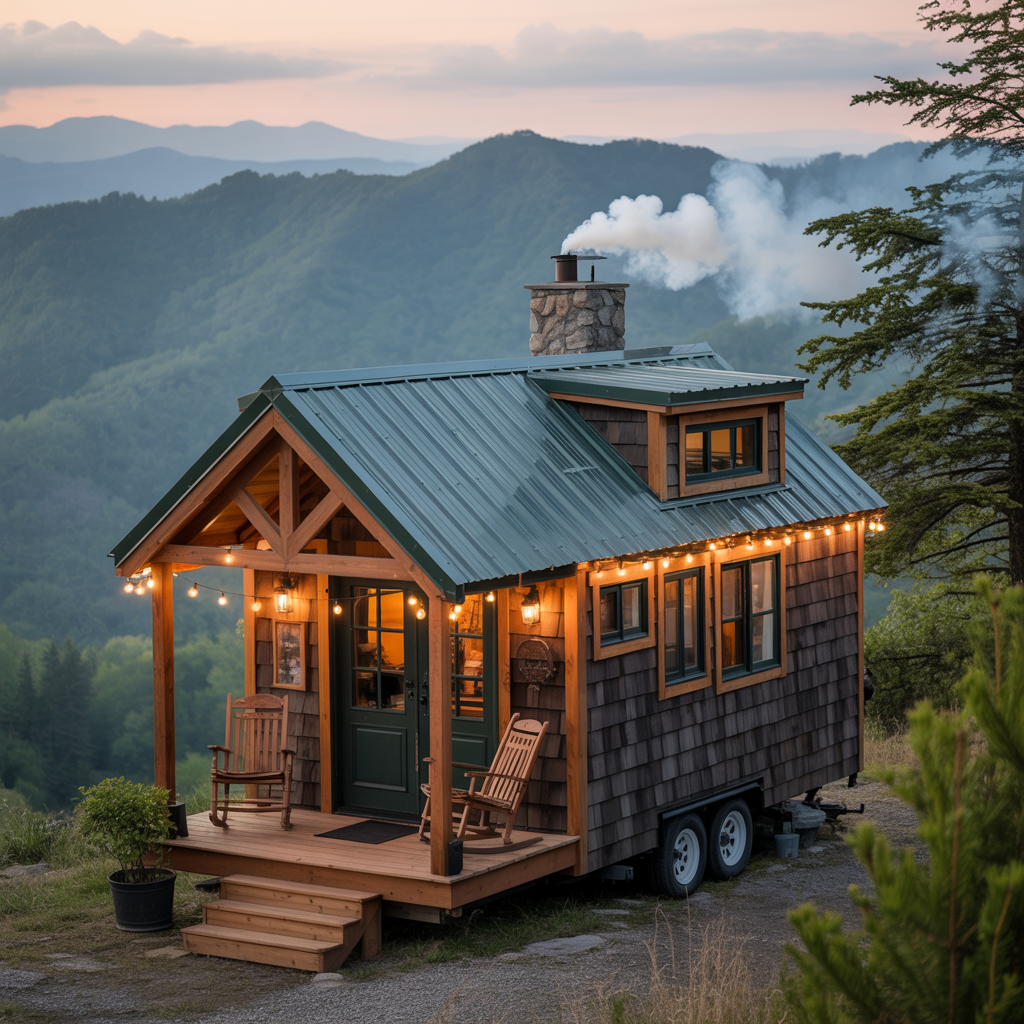The Allure of Compact Escapes: Tiny Houses as Your Next Vacation Haven
In an increasingly fast-paced world, the quest for unique, sustainable, and cost-effective travel experiences has led many to discover the undeniable charm of tiny houses as vacation homes. These miniature dwellings, often characterized by their ingenious space-saving designs and minimalist ethos, offer a refreshing alternative to traditional holiday accommodations. Far from being mere novelties, tiny house rentals are rapidly gaining traction as a preferred choice for discerning travelers seeking intimate getaways, unparalleled connection with nature, and a simplified approach to leisure.
Table of Contents
This comprehensive guide delves into the multifaceted reasons why investing in or renting a tiny house for your next vacation is not just a trend, but a smart, fulfilling, and increasingly popular lifestyle choice that promises memorable experiences and significant advantages over conventional options. We will explore how these compact havens provide a unique blend of comfort, adventure, and financial prudence, especially when considering why tiny houses make great vacation homes.
Unlocking Unrivaled Benefits: Why Tiny House Vacation Homes Outshine the Rest
The appeal of tiny houses as vacation homes extends far beyond their aesthetic charm, offering a compelling array of practical and experiential benefits that resonate deeply with modern travelers. Unlike sprawling vacation properties that demand extensive maintenance and often come with prohibitive price tags, tiny homes present a streamlined, efficient, and remarkably affordable pathway to owning a piece of paradise or enjoying a unique rental experience. Their compact footprint translates directly into lower property taxes, reduced utility bills, and significantly less upkeep, freeing up valuable time and resources that can be better spent enjoying your vacation.
Moreover, the inherent mobility of many tiny houses opens up a world of possibilities, allowing owners to relocate their vacation haven to diverse landscapes, from serene lakeside retreats to bustling urban hideaways, offering an unparalleled flexibility that traditional vacation properties simply cannot match. This adaptability makes them an excellent choice for those who crave variety in their travel experiences, providing a dynamic base for exploring different regions without the commitment of a fixed location.
Strategic Advantages for Savvy Travelers and Investors: The Economic and Experiential Edge of Tiny Homes
Beyond personal enjoyment, the strategic advantages of tiny houses as vacation homes present a compelling proposition for both individual travelers and astute investors. From an economic standpoint, the lower initial investment and reduced operational costs make tiny homes an accessible entry point into the vacation rental market, offering a quicker return on investment compared to larger properties. The burgeoning demand for unique accommodations, particularly those that offer a blend of rustic charm and modern amenities, positions tiny house rentals as highly desirable assets on platforms like Airbnb and Vrbo. This strong market appeal ensures consistent occupancy rates and robust rental income potential.
Practically, tiny houses foster a deeper connection with the surrounding environment, encouraging guests to embrace outdoor activities and local culture. Their often secluded locations provide a much-needed respite from the digital world, promoting mindfulness and genuine relaxation. For those interested in maximizing comfort in tiny house living, exploring innovative space-saving furniture ideas can further enhance the functionality and appeal of these compact dwellings, turning every square foot into a purposeful and inviting area. This blend of financial viability and enriched guest experience solidifies the position of tiny houses as a superior choice for vacation purposes.
The Unmatched Flexibility and Mobility of Tiny House Vacation Homes
One of the most compelling arguments for embracing tiny houses as vacation homes lies in their unparalleled flexibility and, for many, their inherent mobility. Unlike traditional brick-and-mortar vacation properties, which are tethered to a single location, a significant portion of tiny homes are built on wheels, granting owners the extraordinary ability to relocate their sanctuary with relative ease. This mobility is a game-changer for those who desire diverse travel experiences without the constant hassle and expense of booking new accommodations. Imagine spending spring amidst the blooming wildflowers of a national park, summer by the tranquil shores of a hidden lake, and autumn nestled in the vibrant foliage of a mountain retreat – all within the same beloved tiny home.
This dynamic adaptability not only enriches the vacation experience but also offers a unique solution for exploring various regions and climates throughout the year. The ability to follow the seasons, chase ideal weather conditions, or simply discover new favorite spots is a luxury that traditional vacation homes cannot provide. For instance, a tiny house owner might spend a month exploring the Ultimate Georgia Tiny Home Directory before moving on to the serene landscapes of the Pacific Northwest.
This freedom from a fixed address allows for a truly personalized and evolving vacation lifestyle, catering to a sense of adventure and wanderlust that is often stifled by conventional travel arrangements. The ease of transport, facilitated by specialized towing vehicles and a growing network of tiny house friendly parks and communities, makes this nomadic vacation lifestyle increasingly accessible.
This inherent flexibility also means that if a particular location loses its appeal, or if new interests emerge, the tiny house can simply be moved, offering a level of adaptability that maximizes the long-term utility and enjoyment of the investment. This stands in stark contrast to fixed properties, which can become liabilities if the surrounding area declines or personal preferences shift. The mobility factor also opens up opportunities for unique rental experiences, as tiny homes can be placed in remote, picturesque locations that would otherwise be inaccessible to traditional vacation rentals, offering guests an exclusive and immersive escape into nature. This is a key differentiator that appeals to a growing segment of travelers seeking authentic and off-the-beaten-path adventures.

Cost-Effectiveness and Financial Prudence: A Smart Investment
The financial advantages of choosing tiny houses as vacation homes are substantial and multifaceted, making them an exceptionally smart investment for both personal use and potential rental income. The initial purchase price of a tiny home is significantly lower than that of a traditional vacation property, often ranging from 30,000 to 100,000, depending on size, features, and customization. This affordability drastically reduces the barrier to entry for owning a vacation property, making it accessible to a much broader demographic.
Beyond the upfront cost, the ongoing expenses associated with tiny homes are remarkably low. Property taxes are minimal due to their smaller footprint and lower assessed value. Utility costs, including electricity, water, and heating/cooling, are dramatically reduced thanks to efficient design, superior insulation, and the smaller volume of space to regulate. Many tiny homes are also designed with sustainability in mind, incorporating features like solar panels, composting toilets, and rainwater harvesting systems, further reducing reliance on external utilities and lowering monthly bills. This self-sufficiency not only saves money but also aligns with a growing desire for eco-conscious living.
Maintenance is another area where tiny homes shine. With less square footage, there’s less to clean, repair, and maintain, translating into fewer hours spent on chores and more time enjoying your vacation. The simplified upkeep also means that if you choose to rent out your tiny house, the operational overhead is considerably lower, maximizing your profit margins. For investors, the return on investment (ROI) for tiny house rentals can be impressive.
The unique appeal and novelty of tiny homes command premium rental rates, especially in popular tourist destinations or areas with high demand for unique accommodations. Platforms like Airbnb and Vrbo have seen a surge in bookings for tiny homes, with many owners reporting high occupancy rates and substantial income streams. This strong rental market, combined with low operating costs, makes tiny houses a financially attractive asset.
Furthermore, the ability to move the tiny house allows owners to adapt to changing market demands or relocate to areas with higher rental potential, providing a level of financial agility that fixed properties lack. This adaptability mitigates risk and enhances the long-term viability of the investment. The reduced financial burden associated with tiny homes means that vacationing becomes more frequent and less stressful, transforming a luxury into an accessible and sustainable lifestyle choice. This economic efficiency is a cornerstone of the tiny house movement’s growing popularity, proving that less can indeed be more, especially when it comes to vacationing.
Unique Experiences and Deeper Connection to Nature
Beyond the practical and financial benefits, tiny houses as vacation homes offer an unparalleled opportunity for unique experiences and a deeper, more intimate connection with nature. In a world increasingly dominated by digital distractions and urban sprawl, these compact dwellings provide a much-needed sanctuary, allowing guests to disconnect from the everyday and immerse themselves in serene natural environments. Imagine waking up to the gentle sounds of birdsong, with sunlight filtering through the trees, or falling asleep under a blanket of stars, far from the city lights.
Tiny homes are often strategically placed in picturesque locations – nestled in forests, perched on clifftops, or overlooking tranquil lakes – offering breathtaking views and immediate access to outdoor activities. This proximity to nature encourages a more active and mindful vacation. Instead of being confined to a hotel room, guests are prompted to explore hiking trails, go kayaking, practice yoga outdoors, or simply sit on a tiny porch and observe the wildlife. The minimalist design of tiny houses, by necessity, encourages occupants to spend more time outside, fostering a genuine appreciation for the natural world. This intentional shift away from excessive indoor living promotes physical well-being and mental clarity, making tiny house vacations a truly restorative experience.
The smaller living space also cultivates a sense of coziness and intimacy, perfect for romantic getaways or close-knit family adventures. Without the clutter and distractions of larger homes, conversations become more meaningful, and shared moments are savored. Many tiny house vacation rentals are designed with large windows, decks, and outdoor living spaces that seamlessly blend the interior with the exterior, further enhancing the connection to the surroundings. This integration allows nature to become an extension of the living space, blurring the lines between indoors and out.
The novelty of staying in a tiny house itself is an experience. Guests are often fascinated by the clever design solutions, the efficient use of space, and the sustainable features, turning their accommodation into part of the adventure. This unique appeal makes tiny house vacation homes highly sought after by travelers looking for something beyond the ordinary, something that offers both comfort and an authentic, memorable encounter with the wild. For those interested in enhancing their tiny house experience, exploring Compact Home Office Setups can provide ideas for creating a functional workspace, even in a small footprint, allowing for extended stays or ‘work-cations’ in these idyllic settings that make the tiny house experience as comfortable as possible.

Thoughtful Design and Essential Amenities for the Perfect Getaway
The success of tiny houses as vacation homes is largely attributed to their thoughtful design and the surprising array of amenities they manage to incorporate within a compact footprint. Far from being rustic shacks, modern tiny homes are meticulously engineered spaces that prioritize functionality, comfort, and aesthetic appeal. Every inch is utilized with purpose, often featuring multi-functional furniture, clever storage solutions, and integrated appliances that make living in a small space not just tolerable, but genuinely enjoyable.
For instance, a dining table might fold down from a wall, or a sofa might convert into a bed, maximizing the utility of a single area. Storage is often built into floors, stairs, and walls, ensuring that essentials are neatly tucked away, contributing to a clutter-free and serene environment. The design philosophy often emphasizes natural light and ventilation, with large windows, skylights, and strategically placed doors that blur the lines between indoor and outdoor living. This creates a sense of spaciousness and connection to the surrounding environment, even within a small structure. Many tiny house vacation rentals come equipped with full kitchens, allowing guests to prepare their own meals, a significant advantage over hotel stays.
These kitchens, though compact, often feature induction cooktops, convection ovens, and even dishwashers, providing all the conveniences of a larger home. Modern bathrooms, complete with composting or flush toilets, hot showers, and sometimes even small bathtubs, ensure a comfortable and hygienic stay. The integration of smart home technology is also becoming increasingly common, with features like climate control, automated lighting, and entertainment systems enhancing the guest experience. High-speed internet access is often provided, catering to those who need to stay connected or work remotely during their vacation. The interior aesthetics of tiny houses are diverse, ranging from minimalist and modern to rustic and bohemian, allowing owners to create a unique atmosphere that appeals to specific traveler preferences.
For example, some might opt for Earthy Boho Tiny House Interiors to create a natural and calming retreat, while others might prefer a Rustic Farmhouse Tiny Home Decor for a cozy, traditional feel. This attention to detail in design and the inclusion of essential amenities elevate the tiny house vacation experience, providing a comfortable and convenient base from which to explore, relax, and create lasting memories. The careful curation of these elements ensures that guests feel pampered and at home, despite the smaller footprint, making tiny houses a truly viable and desirable option for vacationers seeking both novelty and comfort.

Sustainability and Eco-Conscious Living: A Greener Getaway
In an era where environmental consciousness is paramount, tiny houses as vacation homes stand out as a beacon of sustainable and eco-conscious living. Their inherently smaller footprint translates directly into reduced resource consumption, making them a far more environmentally friendly option compared to traditional vacation properties.
The construction of tiny homes typically requires fewer raw materials, and their compact size means less energy is needed for heating, cooling, and lighting. Many tiny house builders and owners prioritize sustainable building practices, utilizing reclaimed materials, locally sourced timber, and non-toxic finishes to minimize their environmental impact. This commitment to sustainability extends beyond construction to daily operation. Tiny homes often incorporate a range of eco-friendly features designed to conserve resources and reduce waste. These can include:
•Solar Panels: Many tiny houses are equipped with solar power systems, allowing them to generate their own electricity and significantly reduce their reliance on the grid. This not only lowers utility bills but also minimizes carbon emissions.
•Composting Toilets: These innovative systems eliminate the need for water-intensive flush toilets, conserving precious water resources and producing nutrient-rich compost.
•Rainwater Harvesting: Systems that collect and filter rainwater for non-potable uses, such as showering and flushing, further reduce water consumption.
•Efficient Appliances: Tiny homes are typically outfitted with energy-efficient appliances, from mini-fridges to induction cooktops, all designed to minimize energy use.
•Superior Insulation: High-performance insulation and airtight construction help maintain comfortable indoor temperatures with minimal energy input, reducing the need for excessive heating or air conditioning.
By choosing a tiny house for their vacation, travelers actively participate in a more sustainable form of tourism. They contribute to a reduced carbon footprint, support responsible resource management, and often engage with local communities in a more meaningful way. This alignment with eco-values appeals to a growing segment of travelers who seek to minimize their environmental impact while enjoying their leisure time.
The simplified lifestyle inherent in tiny living also encourages a mindful approach to consumption, prompting guests to consider what they truly need and to appreciate the beauty of simplicity. This can be a refreshing change from the often-excessive consumption associated with traditional vacations. The focus on sustainability also extends to the surrounding environment. Many tiny house communities and rentals are designed to blend harmoniously with nature, preserving natural landscapes and promoting biodiversity.
This creates a tranquil and healthy environment for both residents and visitors. The growing popularity of tiny homes as vacation rentals is a testament to the increasing demand for travel options that are not only enjoyable but also responsible and respectful of the planet. It’s a choice that allows vacationers to relax and rejuvenate with a clear conscience, knowing they are contributing to a greener future. For those looking to optimize every inch of their tiny home, the Ultimate Space-Saving Products & Gadget Guide for Tiny Homes offers valuable insights into maximizing functionality in a compact space, further enhancing the sustainable living experience.
The Growing Trend and Community Aspect: A Shared Passion
The rise of tiny houses as vacation homes is not merely a fleeting trend but a reflection of a broader societal shift towards minimalism, sustainability, and experiential travel. What began as a niche movement has blossomed into a significant segment of the hospitality industry, driven by a growing desire for authentic, unique, and often off-grid experiences. This surge in popularity is evident in the proliferation of tiny house resorts, dedicated rental platforms, and a vibrant online community that shares insights, tips, and travel stories. The appeal extends to a diverse demographic, from young adventurers seeking novel escapades to retirees looking for simplified, accessible getaways.
This widespread adoption has fostered a unique sense of community among tiny house enthusiasts. When you choose a tiny house for your vacation, you’re not just booking a place to stay; you’re often tapping into a network of like-minded individuals who share a passion for intentional living and a connection to nature. Many tiny house resorts and communities host events, workshops, and communal spaces that encourage interaction among guests, transforming a simple vacation into a social and enriching experience. This sense of belonging is a powerful draw, offering a refreshing contrast to the anonymity often associated with traditional hotels or large resorts.
The shared values of simplicity, environmental stewardship, and a desire for genuine experiences create an instant bond among tiny house dwellers and visitors. This community aspect is further amplified by the active presence of tiny house advocates and builders who continually innovate and push the boundaries of small-space design. Their dedication ensures that the tiny house movement remains dynamic and responsive to the evolving needs and desires of its growing audience. The media’s increasing coverage of tiny living, from television shows to online documentaries, has also played a significant role in demystifying the lifestyle and showcasing its myriad benefits, further fueling its growth.
As more people discover the joys and advantages of compact living, the demand for tiny house vacation homes is only set to increase, solidifying their position as a mainstream and highly desirable option for future travel. This burgeoning market creates exciting opportunities for both travelers seeking unique stays and investors looking to capitalize on a rapidly expanding sector.
The community aspect also provides a valuable resource for those considering a tiny house for permanent living, offering a chance to experience the lifestyle firsthand and connect with experienced individuals. For those looking to make their tiny house living rooms comfortable, exploring resources like Making Tiny House Living Rooms Comfortable: The Complete Guide to Cozy Small Space Living can provide valuable insights into optimizing comfort and functionality in compact spaces.
The Future of Tiny House Vacation Homes: Innovation and Expansion
The trajectory of tiny houses as vacation homes points towards a future of continued innovation, diversification, and widespread adoption. As the demand for unique, sustainable, and experiential travel continues to grow, tiny homes are perfectly positioned to meet these evolving consumer preferences. We can anticipate several key developments that will further solidify their place in the hospitality landscape:
•Technological Integration: Future tiny homes will likely incorporate even more advanced smart home technologies, enhancing convenience, energy efficiency, and guest comfort. Imagine AI-powered climate control, integrated entertainment systems, and seamless connectivity, all managed through intuitive interfaces. This will elevate the luxury aspect of tiny living, appealing to a broader range of travelers.
•Diversification of Designs and Locations: While current tiny homes offer a variety of styles, the future will bring even greater architectural diversity, catering to niche markets and specific aesthetic preferences. We might see more specialized designs for extreme climates, unique artistic interpretations, or even floating tiny homes. Locations will also expand beyond traditional natural settings to include urban tiny house villages, offering a compact, community-focused alternative to city hotels.
•Increased Accessibility and Infrastructure: As the tiny house movement matures, so too will the infrastructure supporting it. This includes more dedicated tiny house communities, expanded legal frameworks for tiny home placement, and improved access to financing and insurance options. The development of more sophisticated towing and transport services will also make mobile tiny home vacations even more seamless.
•Focus on Wellness and Retreats: Tiny homes are inherently conducive to wellness and mindfulness. The future will likely see an increase in tiny house retreats focused on yoga, meditation, digital detox, and nature therapy. These specialized offerings will cater to individuals and groups seeking restorative experiences in serene, minimalist environments.
•Hybrid Models and Fractional Ownership: To make tiny house vacation home ownership even more accessible, we may see the rise of hybrid models, such as fractional ownership or timeshare-like arrangements. This would allow multiple individuals to share the cost and use of a tiny home, maximizing its utilization and making it an even more attractive investment.
The continuous evolution of tiny house design, coupled with a growing global awareness of environmental impact and the desire for authentic experiences, ensures that these compact dwellings will remain at the forefront of the vacation rental market. They represent a paradigm shift in how we approach leisure and travel, offering a sustainable, flexible, and deeply personal way to explore the world.
The future of tiny house vacation homes is not just about smaller spaces; it’s about bigger experiences, greater freedom, and a more conscious way of living and traveling. As the industry continues to mature, the possibilities for innovation and expansion are virtually limitless, promising an exciting future for both tiny home enthusiasts and the broader travel community. For further insights into the broader tiny house movement, resources like the Tiny House Community offer valuable information and connections.
Conclusion: Embrace the Tiny House Vacation Revolution
In summary, the burgeoning popularity of tiny houses as vacation homes is a testament to their multifaceted appeal, offering a compelling blend of affordability, flexibility, sustainability, and unique experiential value. From their cost-effective ownership and low maintenance to their ability to foster a profound connection with nature and provide unparalleled mobility, tiny homes present a superior alternative to conventional vacation accommodations.
They cater to a growing demographic of travelers who prioritize authenticity, environmental responsibility, and a simplified approach to leisure. Whether you are seeking a tranquil escape, an adventurous exploration, or a smart investment opportunity, the tiny house vacation revolution offers a compelling solution. By embracing these compact havens, you are not just choosing a place to stay; you are opting for a lifestyle that champions efficiency, mindfulness, and a deeper appreciation for the world around us.
The future of vacationing is undoubtedly tiny, promising grand experiences within a smaller footprint. It’s time to discover the immense comfort and boundless possibilities that await within these charming, miniature dwellings. We encourage you to explore the diverse world of tiny house rentals and discover firsthand why these innovative homes are redefining the art of the getaway. For more information on the benefits of tiny living, consider exploring articles on The Tiny Life, a comprehensive resource for all things tiny house related.



